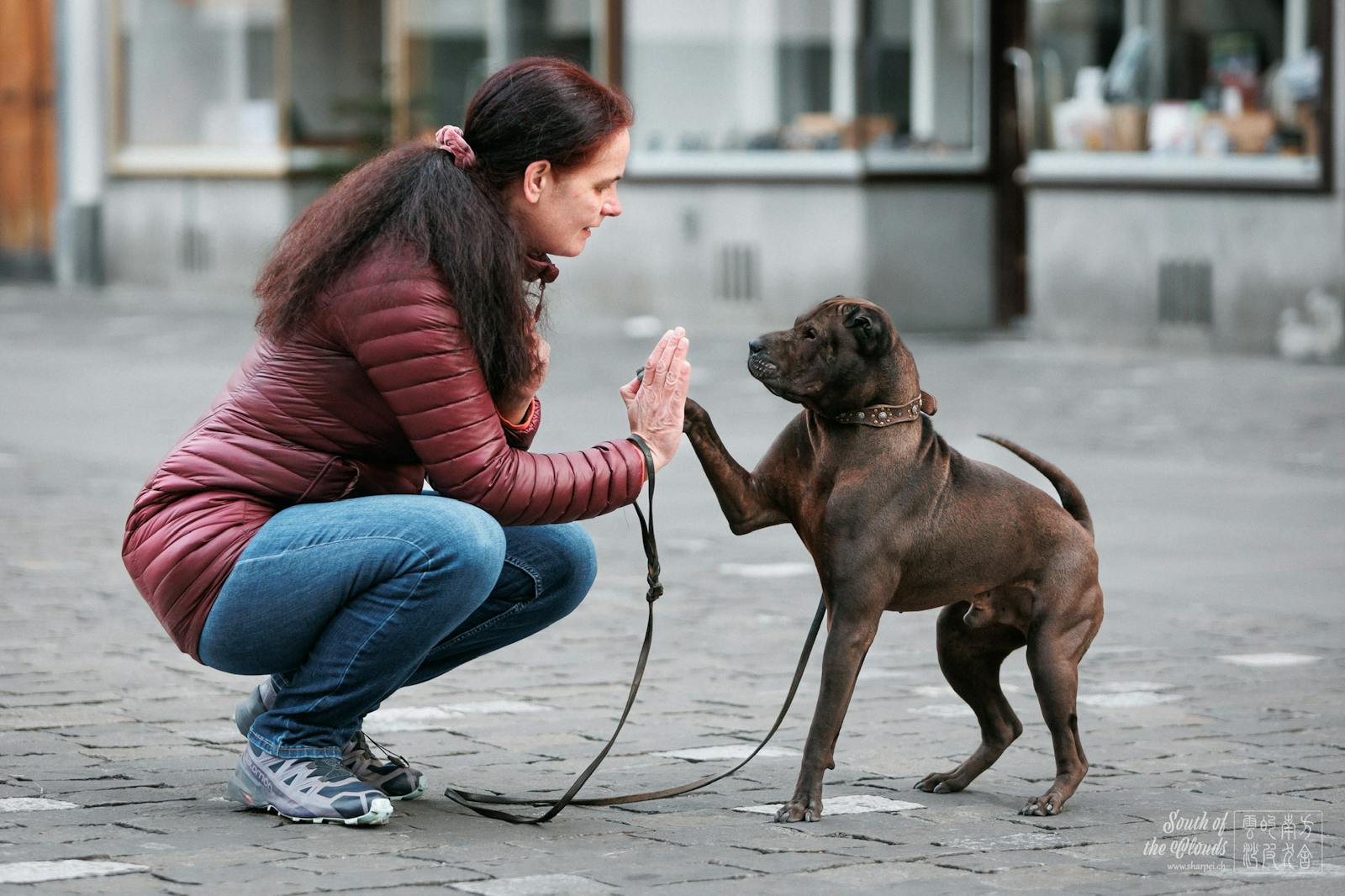The Shar Pei - We are torture breeders?!
In my article "The Shar Pei: Qualzucht?!" for the dog magazine WUFF (12/22) I explained why the Shar Pei is now a Qualzucht. I have described the 50 year path of the Shar Pei in our western world of modern pedigree dog breeding; from the agile, slim working dog from southern China to the molossoid couch potato on the sofas of the world. I also went into the catastrophic consequences that this had not only on the visible phenotype but above all on the invisible genotype of the breed.
The term torture breeding (Qualzucht) alone is unpleasant and I thought long and hard about changing it to "non-ethical breeding" for my articles on the subject. A dog owner who is confronted with the fact that his dog belongs to a Qualzucht certainly feels just as offended by the word as most breeders. We tend to react very emotionally to this important topic, although a rational, factual approach would be much more important.
On the other hand, the term "unethically bred breed" doesn't sound direct enough. Almost trivializing. That's why I use the very direct word Qualzucht, because I don't want to downplay anything. Although I can understand that individual owners and breeders of a Qualzucht can feel offended at first.
And why we like to feel attacked when we are confronted with the topic of torture breeding in relation to our own breed, the Shar Pei, is often due to a lack of understanding of what torture breeding actually means.
Torture breeding (Qualzucht) refers to breeding with animals that carry damage-causing hereditary factors that could result in the outbreak of a disease or damage. Damage to health, pain, deformities and suffering are therefore accepted.
A Qualzucht breed (tortured bred breed) is a breed in which phenotypic and genotypic traits are accepted despite health risks or where the breed standard is designed for visible Qualzucht traits. A single animal is a Qualzucht if it exhibits phenotypic Qualzucht traits or carries genotypic defective genes and could pass them on to later generations.
Thus, a single phenotypically unobtrusive dog that carries defected genes that could cause distress is a dog with Qualzucht traits.
With all the almost identical definitions in different countries, the use of the subjunctive is important. It's not just about breeding dogs that will definitely become ill and suffer, it's also about dogs that are deliberately bred with genetic trait carriers and whose offspring could therefore become ill.
The diverse hereditary genetic diseases are one of the biggest problems in modern pedigree dog breeding. SPAID (Shar Pei Autoinflammatory Disease) and its various tragic symptoms, including secondary diseases, which often lead to the early death of dogs due to kidney failure, is not a monogenic genetic defect, like primary open-angle glaucoma (POAG), which is also known in Shar Pei. So far we know of two genetic defects related to SPAID, more are suspected. For several years we have been able to have our dogs genetically tested for both defects.
Even if the results of these tests are often trivialized in the Qualzucht discussion, they are currently our only scientific tool with which we could select the non carrier dogs for breeding programs. Because single and double carriers can both become ill, albeit with different degrees of probability.
And it is precisely this probability that the Qualzucht discussion is about. The likelihood that a puppy I bred will be a single or double carrier and the likelihood that a puppy I bred or its offspring could suffer as a result. Through conscious breeding with carriers, I simply tolerate this probability.
The big dilemma is that after only 50 years of modern Shar Pei breeding, there are hardly any dogs available that are non carrier, less than 10% (Statistical information from Laboklin of all Shar Pei tested since 2017, from 11/22). In addition, there are other serious breeding problems, as we know them in almost all dog breeds today, such as the low level of genetic diversity or an often high coefficient of inbreeding, both important factors that have a negative effect on the genetic fitness of a breed. Many autoimmune diseases and a variety of allergies are related to the DLA haplptypes, which are becoming more and more well researched.
As a Shar Pei breeder, we need to know all of these factors. Thanks to modern genetic testing methods, this is now possible for us. And all of this information could help us make factually rational breeding decisions if we use them efficiently. Equally important is a very honest approach to health problems that arise and appropriate documentation.
As breeders, we have to make ethical decisions. Not only for our own breed and the puppies we breed. We are responsible for the entire population, because every breeding decision made by an individual breeder has an impact on the entire future population. Any further spread of a defective gene can cause countless dogs to suffer.
Of course, there are other factors that often have negative effects in modern pedigree dog breeding that we need to deal with in terms of general health. I will publish these other factors in a separate article in the near future. Since the publication of my first Qualzucht article, I have become clearly aware of how elementary a rationally conducted, factual discussion is with such an emotionally charged topic as pedigree dog breeding.

